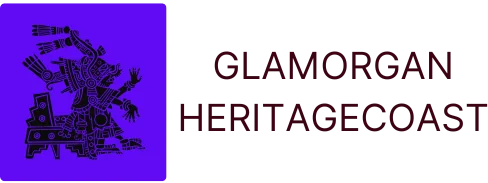In a world where smartphones are practically an extension of our arms, the types of mobile apps available can feel as endless as a cat video binge. From productivity boosters to games that devour hours of time, mobile apps have transformed how people live, work, and play. Understanding the different categories of mobile apps can help users find the perfect tools to enhance their daily lives—or at least distract them from that mountain of laundry.
Table of Contents
ToggleTypes Of Mobile Apps
Mobile apps can be categorized into several types based on their development and functionality. Understanding these distinctions helps users choose the right app for their needs.
Native Apps
Native apps are built specifically for a particular platform, such as iOS or Android. These apps use platform-specific programming languages like Swift for iOS or Kotlin for Android. Performance stands out as a key benefit of native apps, often resulting in faster, smoother user experiences. Examples include Instagram and WhatsApp, which leverage the strengths of their respective platforms for enhanced functionality.
Hybrid Apps
Hybrid apps combine elements of both native and web apps. These apps are created using web technologies like HTML, CSS, and JavaScript, then wrapped in a native shell for distribution. This approach allows hybrid apps to run on multiple platforms without significant code rewriting. Popular examples include Facebook and Twitter, which support rich features while maintaining cross-platform accessibility.
Web Apps
Web apps operate in browsers and don’t require installation on devices. They are developed using standard web technologies such as HTML, CSS, and JavaScript. Accessibility is a major advantage, as users can access web apps from any device with an internet connection. Examples include Google Docs and Trello, which provide robust functionality directly through web browsers.
Social Media Apps
Social media apps serve as platforms for communication, content sharing, and social interaction. They play a crucial role in connecting users across the globe.
Facebook ranks as one of the most widely used social media apps, boasting over 2.9 billion monthly active users as of October 2023. Users engage by sharing updates, photos, and videos with friends and followers. Groups and events facilitate community building, encouraging people to connect over shared interests. Advertising tools allow businesses to reach targeted audiences effectively. Facebook’s extensive features support various media formats, appealing to diverse user preferences.
Instagram focuses on visual content, catering to a user base exceeding 1.4 billion monthly active users. This platform emphasizes photo and video sharing, encouraging users to express creativity through aesthetically pleasing posts. Stories and Reels enable dynamic storytelling, while hashtags enhance content discoverability. Brands leverage Instagram for marketing, utilizing influencer collaborations to tap into niche communities. The app’s user-friendly interface attracts various demographics, making it a staple in modern social media.
Productivity Apps
Productivity apps enhance efficiency in both personal and professional tasks. Users can streamline workflows and manage time effectively with these tools.
Microsoft Office
Microsoft Office comprises a suite of applications designed to facilitate productivity. Word, Excel, and PowerPoint represent the core tools within this suite, each catering to specific needs. Word offers robust document creation features, Excel provides powerful spreadsheet functionalities, and PowerPoint assists with dynamic presentations. These applications integrate seamlessly, enabling users to collaborate and share files across devices. Users can access Office through a subscription model, ensuring they work with the latest features and updates.
Trello
Trello operates as a visual project management tool that simplifies organization. Tasks are represented by cards that users can move across customizable boards, allowing for intuitive tracking of progress. Team collaboration thrives on Trello due to its ability to assign tasks and set deadlines easily. Notifications keep everyone informed of updates, fostering communication. Trello also integrates with various other tools, enhancing its functionality and making it a versatile choice for teams seeking streamlined project management.
Games
Mobile gaming represents a dynamic segment of the app market, offering entertainment and engagement for users of all ages. This category includes various genres, from puzzles to battle royale, creating endless hours of gameplay.
Candy Crush Saga
Candy Crush Saga is a renowned puzzle game that captivates users with its match-three gameplay mechanics. Players combine colorful candies to complete levels filled with unique challenges. Over 1.1 billion downloads since its release showcase its popularity. Daily challenges and in-game rewards keep players engaged, while social features allow friends to compete for high scores, enhancing the gaming experience. Events and seasonal themes keep gameplay fresh, drawing users back regularly.
PUBG Mobile
PUBG Mobile is a battle royale game that has taken the mobile gaming world by storm. Players parachute onto an island and must scavenge for weapons and gear while eliminating opponents. With over 1 billion downloads, its global community thrives on consistent updates and seasonal events. The game’s realistic graphics and immersive audio contribute to intense gameplay. Players can team up with friends or engage in solo matches, encouraging both collaboration and competition in each session.
E-Commerce Apps
E-commerce apps play a vital role in facilitating online shopping experiences for consumers and businesses alike. They provide users with convenience and accessibility, allowing for seamless transactions from anywhere.
Amazon
Amazon stands as a leader in the e-commerce sector. As of 2023, it boasts over 300 million active customer accounts. Users can browse millions of products, take advantage of Prime memberships for quick shipping, and access various services like Audible and Prime Video. Additionally, Amazon’s robust recommendation engine personalizes shopping experiences, boosting customer satisfaction and encouraging repeat purchases.
eBay
eBay offers an innovative approach to buying and selling. With over 182 million active buyers, it creates a marketplace for both new and used items. Sellers can auction their products or set fixed prices, appealing to different consumer preferences. eBay’s user rating system enhances trust among buyers and sellers, ultimately fostering a secure environment for transactions. The diverse categories, from electronics to collectibles, attract a wide range of interests.
Conclusion
The diverse landscape of mobile apps significantly influences daily life. By understanding the various types of apps available users can make informed choices that enhance their experiences. Whether it’s the high performance of native apps the versatility of hybrid apps or the accessibility of web apps each category serves a unique purpose.
Social media apps foster global connections while productivity apps streamline tasks and enhance efficiency. Gaming apps provide entertainment and community engagement while e-commerce apps revolutionize shopping experiences. Each type of app contributes to a more interconnected and efficient world. Exploring these options empowers users to find the perfect tools for their needs and preferences.










